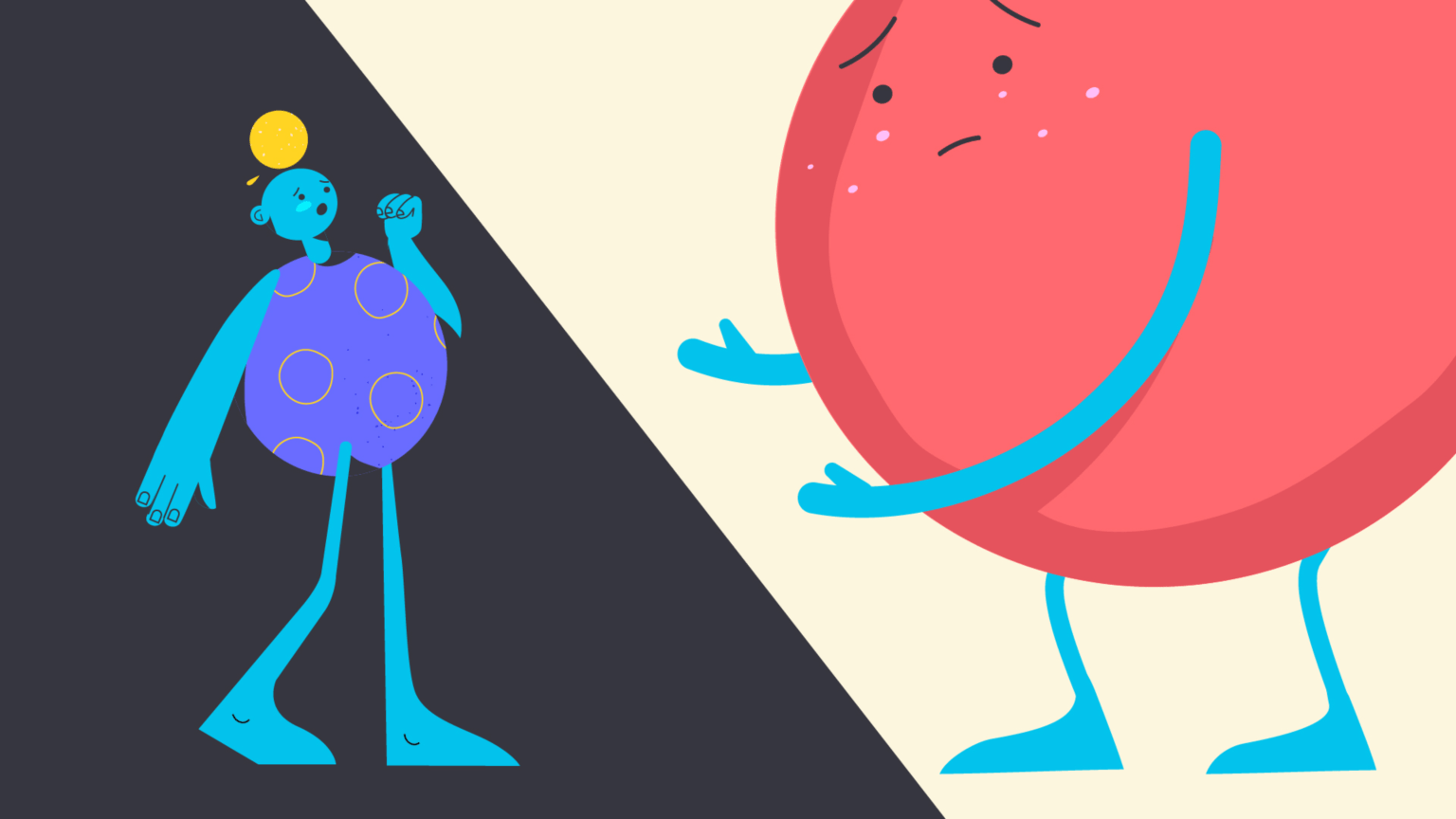Anxiety Disorders - An Overview

Everyone has anxiety. And that's a good thing! However, when anxieties become stronger, more frequent, longer-lasting, and uncontrollable, we speak of an anxiety disorder.
Everyone is afraid of certain things or situations. And that's a good thing! Because it guides us safely through our daily lives by repeatedly alerting us to smaller and larger dangers in our environment and ensuring that we respond appropriately to them. Whether we buckle up in the car, hold onto the railing, recoil from an approaching bicycle or a bee, or stay inside during a thunderstorm. The fact that we have fear ensures in most cases that we remain unharmed. However, we speak of an anxiety disorder when one frequently and continuously feels great fear of a threat that others don't perceive as dangerous and that one perceives as uncontrolled.
Anxiety Disorders Overview
In psychology, the following anxiety disorders are distinguished from one another: There are those without a specific trigger, such as panic disorder and generalized anxiety disorder, and those with specific triggers, which can be recognized by the word ending "phobia": agoraphobia, social phobia and specific phobia.
Panic Disorder
In panic disorder, those affected suffer from recurring panic attacks with pronounced physical and psychological symptoms. The attacks are not linked to specific situations or circumstances and thus occur unpredictably. Those affected mostly live in fear of the next panic attack. A vicious cycle of fear of fear develops. In addition, there are fears of being seriously ill or going insane.
What Panic Symptoms Are There?
If at least four of the following symptoms occur together and no physical illnesses are present, a panic attack can be concluded:
- Heart palpitations / racing heart
- Numbness or tingling
- Nausea
- Hot flashes / chills
- Chest pain or discomfort
- Feelings of unreality
- Shortness of breath
- Feeling of suffocation / dry mouth
- Dizziness or lightheadedness
- Feeling detached from one's body
- Wobbly legs
- Sweating
- Trembling
- Stomach problems
- Fear of losing control / going insane
- Fear of dying
Often, those affected begin to avoid situations and places where they had a panic attack, or certain activities that they associate with it. This avoidance behavior can severely restrict daily life and result in another anxiety disorder: panic disorder with agoraphobia.
Agoraphobia
Agoraphobia (also called "fear of open spaces") is an anxiety disorder in which fears and panic are triggered by certain situations and places, such as stores, cinemas, elevators, crowds, public spaces, or public transportation. Anxiety-laden environments can trigger panic symptoms and are therefore strongly avoided. The main fear is not being able to escape easily or receive help in an emergency. In extreme cases, those affected can no longer leave their own home.
Social Phobia
People with social phobia have great fear of negative evaluation by others, of embarrassing themselves, or being perceived as strange. They are ashamed of their own behavior and visible anxiety reactions (sweating, trembling, blushing). Thus there is fear of social situations and interactions in which they are the center of attention. These situations are avoided as much as possible or endured only with the greatest anxiety, up to and including panic attacks. Even afterwards, those affected ruminate for a long time about the situation and fear that they were noticed or evaluated negatively. Social life is thereby greatly restricted. Those affected often have problems finding partners and friends, live in social isolation, and cannot fully realize their professional potential.
Generalized Anxiety Disorder (GAD)
Those affected by GAD suffer from persistent and diffuse fears, worries, and physical tension. Fears often relate to everyday and financial events and problems, but particularly also worry that oneself or relatives could become seriously ill or have an accident. The worries are perceived as barely or not at all controllable and highly stressful. In addition to panic symptoms, symptoms such as restlessness, gastrointestinal complaints, concentration problems, irritability, sleep disturbances, and cardiovascular problems can also occur.
Specific (Isolated) Phobias
In a specific (isolated) phobia, those affected have strong fear of specific objects or situations. Social, everyday, and professional life aspects are significantly restricted as a result.
Frequently there are fears of animals (e.g., spiders, dogs), natural forces (e.g., thunderstorms, bodies of water), injuries (e.g., injections, blood), or situations (e.g., fear of flying, fear of heights, tunnels).
Those affected avoid feared objects/situations or endure them only with strong fears. They are also aware that no concrete danger emanates from the object or situation and that the strong fear reaction is disproportionate.




